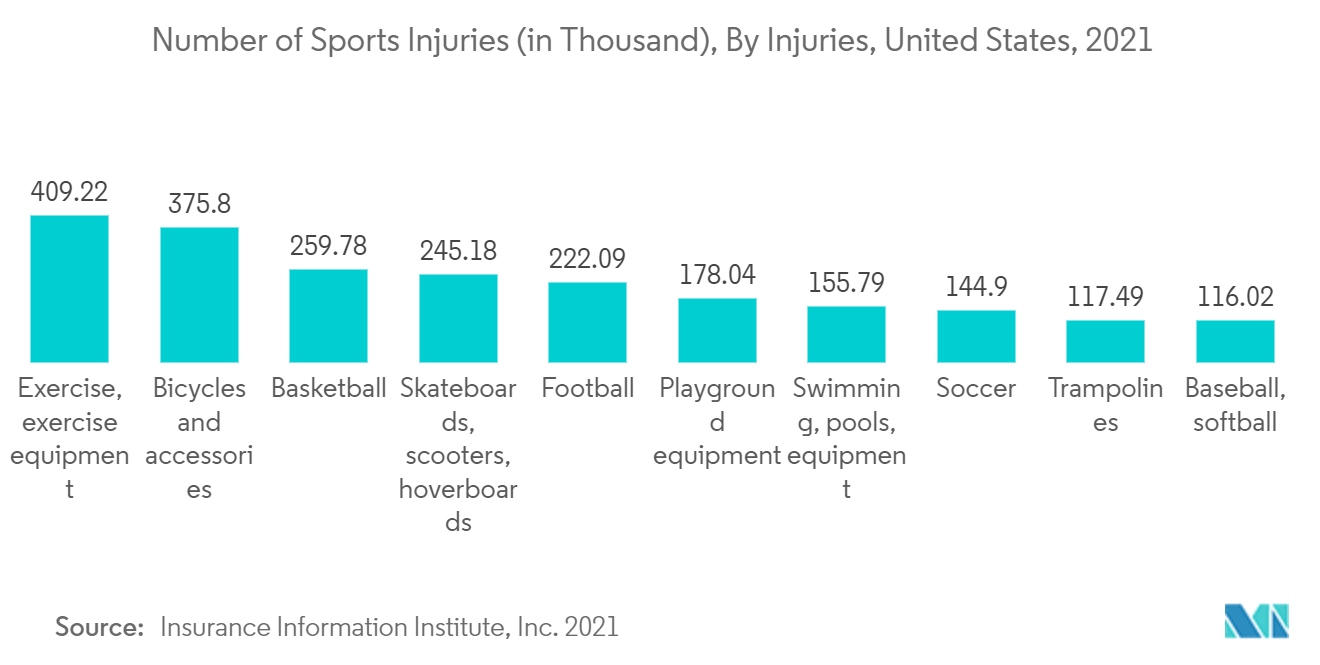Market Trends of Autologous Matrix-induced Chondrogenesis Industry
Knee Joint Holds Significant Share in the Global Autologous Matrix-induced Chondrogenesis Market Over the Forecast Period
- The knee cartilage segment is expected to experience substantial growth in the studied market due to several factors, including the increase in knee replacement surgeries, the rise in injuries, and the surge in minimally invasive procedures. According to the American Academy of Orthopaedic Surgeons (AAOS) 2021 report, nearly one million total knee replacement surgeries were performed in the United States in 2021, and the annual number is projected to rise to 3.5 million by 2030.
- Moreover, many research works are focused on the advantages of autologous matrix-induced chondrogenesis (AMIC) in knee replacements and surgeries. For instance, a ScienceDirect article published in November 2022 found that utilizing AMIC with a hyaluronic acid scaffold for the healing of chondral lesions of the knee yielded satisfactory clinical results in the short and medium term. This procedure improved symptoms, sports activities, and functionality and resulted in a high level of satisfaction among evaluated patients.
- Additionally, the rise in sport injury cases leads to knee surgeries, and AMIC is expected to drive market growth. For example, exercise equipment accounted for about 409,000 injuries, the most in any category of sports and recreation, according to the National Safety Council (NSC) in 2021. Since the AMIC technique is a promising cartilage resurfacing procedure, it is widely utilized in knee surgeries and replacements that occur during sports and recreational activities.
- Therefore, due to the rise in the prevalence of sports injuries and the increase in knee replacement and surgery involving autologous matrix-induced chondrogenesis, the studied segment is likely to witness significant growth over the forecast period.

North America Anticipated to Hold a Significant Market Share Over the Forecast Period
- North America is projected to hold a substantial market share in the studied market due to various factors. Firstly, there has been an increasing incidence of bone and joint disorders in the region, alongside a rising geriatric and obese population.
- For instance, according to the Congressional Budget Office's January 2023 update, the percentage of people aged 65 or older relative to the number of people aged 25 to 64 is expected to rise from 34% in 2023 to 46% in 2053 in the United States. As the geriatric population grows, there is an increase in bone and joint issues due to the reduction of essential growth factors as a result of aging. This is likely to lead to a rise in the adoption of autologous matrix-induced chondrogenesis over the forecast period.
- Secondly, an increase in sports injuries is expected as approximately 35 million children between the ages of 5 and 18 participate in organized sports each year in the United States, as per the 2023 update by UC DAVIS Health, Sports Medicine. More than 3.5 million kids under the age of 14 receive medical treatment for sports injuries each year. Thus, an increase in sports injuries is expected to undergo surgeries, thereby fueling the growth of the market studied.
- Moreover, there is an increasing awareness of newly introduced treatment procedures and technologies among physicians and patients in the region. Alongside this, substantial investments by the government in the technologies and therapies adopted for cartilage regeneration are supporting the growth of the market in North America.
- For instance, the Burden of Osteoarthritis in Canada 2021 report highlights that about 15% of Canadians aged 20+ have osteoarthritis (OA) in 2021. More than 4 million Canadians, or about 1 in every 7 adults, have OA. Hence, the high prevalence of OA is likely to augment the demand for the market studied over the forecast period.
- Therefore, due to the rise in the prevalence of sports injuries, the increasing geriatric population coupled with the risk of osteoarthritis, North America is expected to hold a significant market share over the forecast period.


